
How to Wire a 7 Way Trailer Plug (It's Easier Than You Think)
What is the Color Code for 7-Way Trailer Wiring?
Green: Right turn/brake light Yellow: Left turn/brake light Brown: Tail/running lights White: Ground wire Blue: Brake controller output Black: Battery hot lead Purple: Reverse lights
Green: Tail/running lights Yellow: Reverse Lights Brown: Right turn/brake light White: Ground wire Blue: Brake controller output Black: Battery hot lead Red: Left turn/brake light
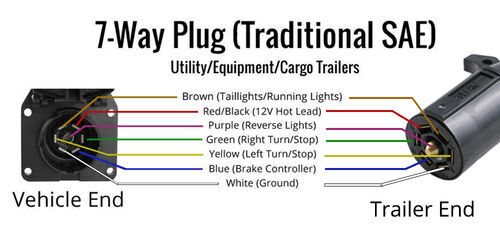

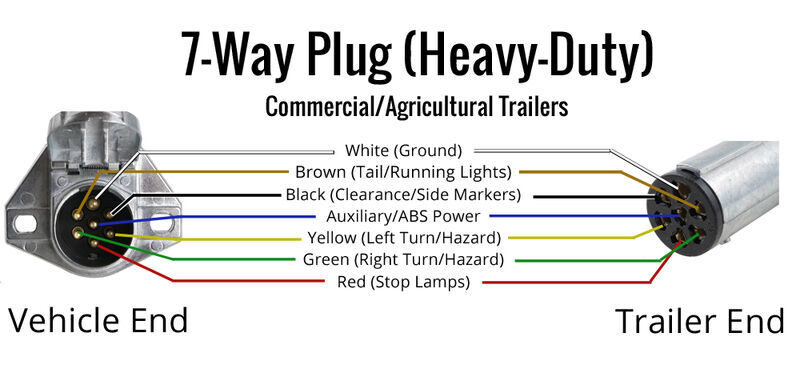
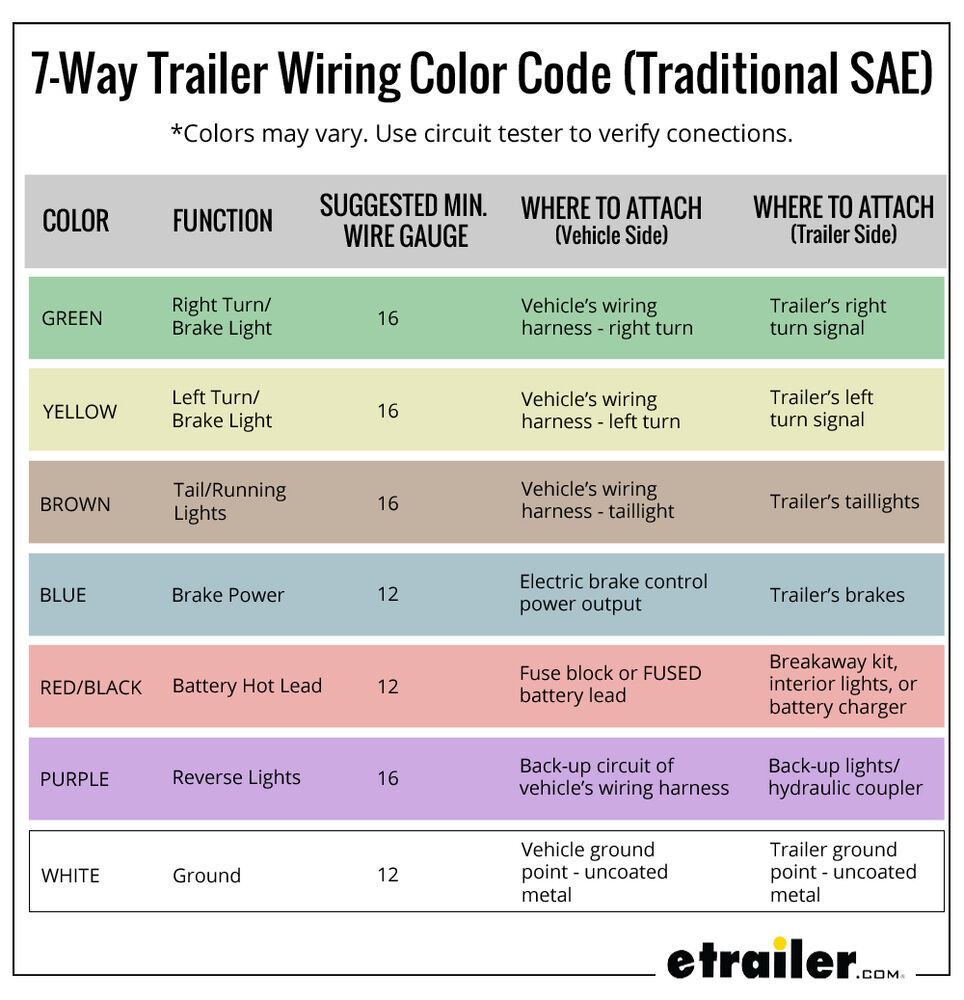
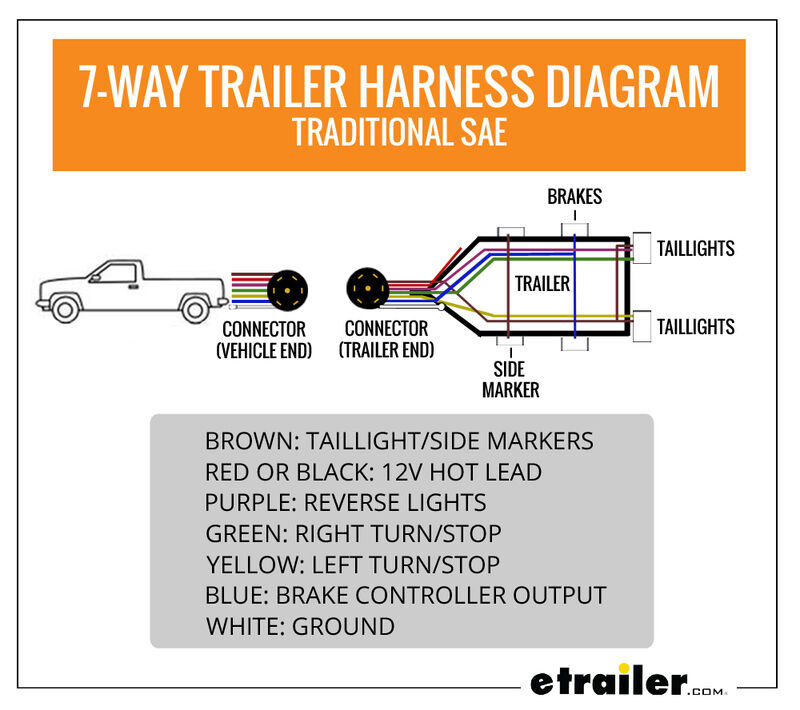
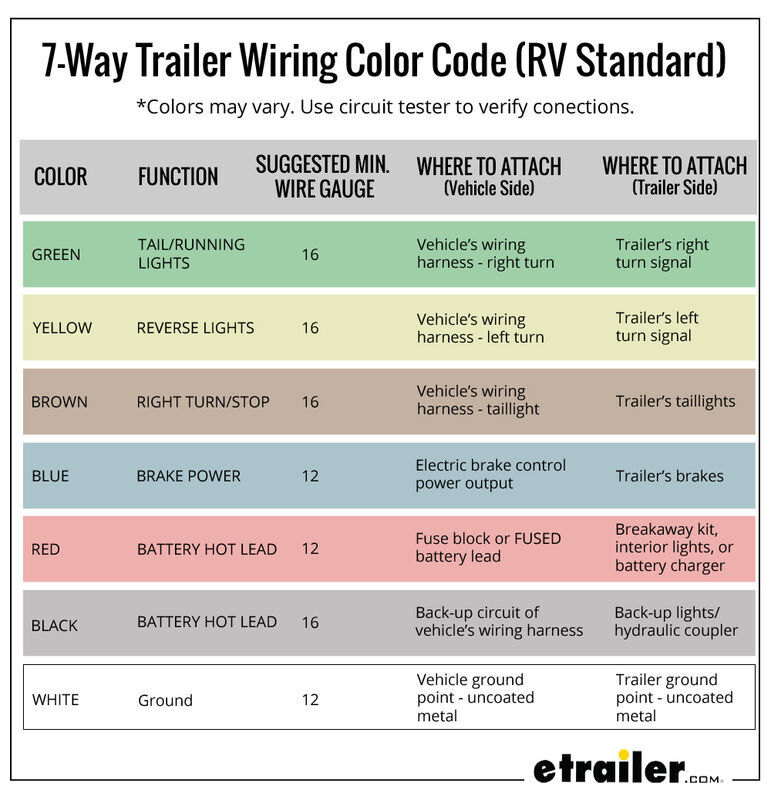
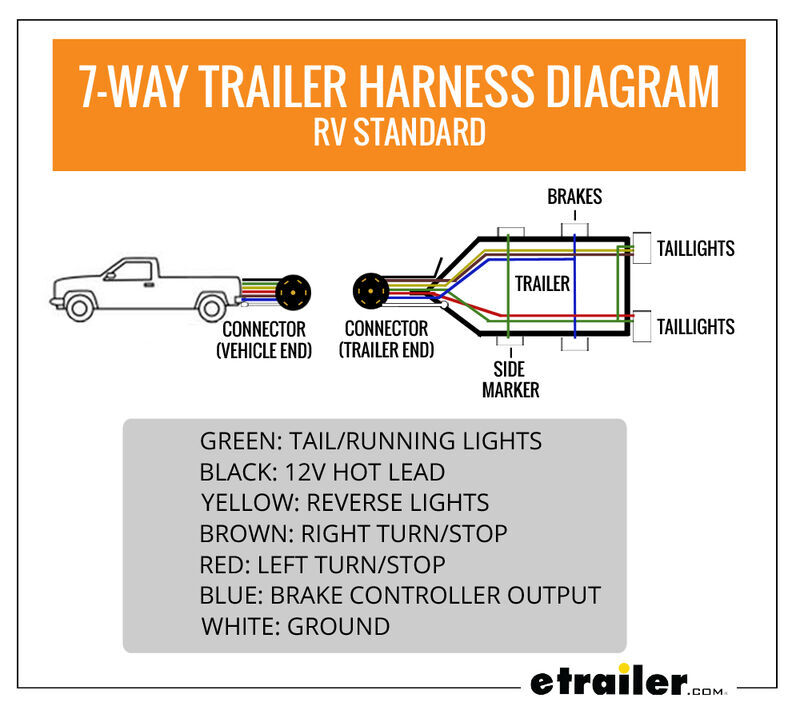
Wiring a Trailer with a 7-Way: Step by Step
Trailer Side
Step 1: Prepare for Trailer Wiring Installation
A junction box to organize and secure wiring A breakaway kit in case your trailer becomes disconnected A brake controller to control trailer braking
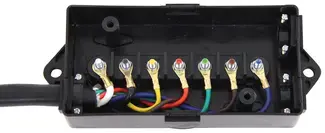
Step 2: Locate or Install Junction Box
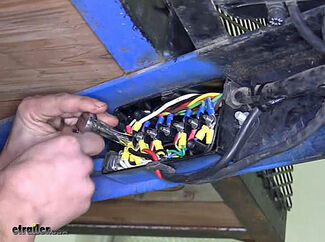
Step 3: Make Trailer Connections

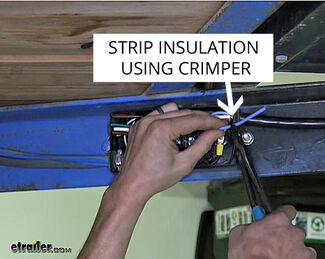
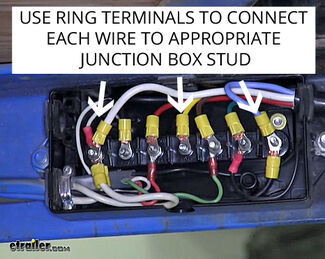
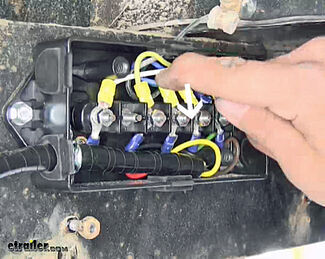
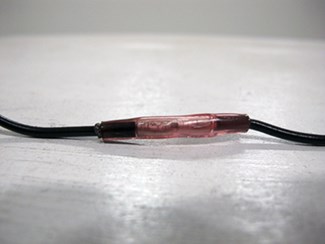
Vehicle Side
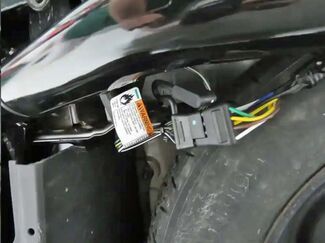
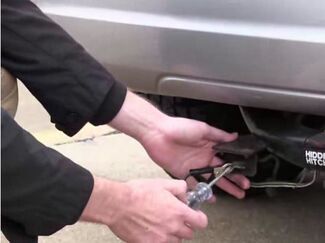
If the vehicle connector is under the vehicle, use a mounting bracket to attach it to the vehicle. This will help prevent damage that may occur if the connector is left dangling. Use a small amount of grease on all electrical connections—the plugs on your automobile and the connector itself—to help prevent corrosion.
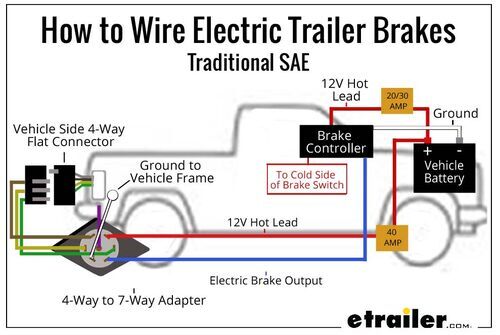
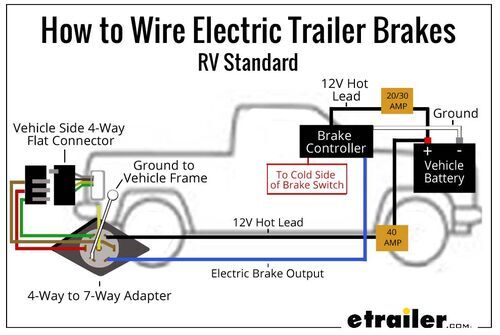
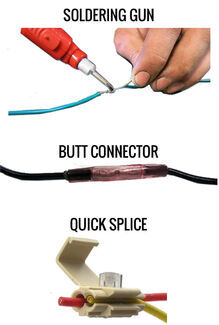
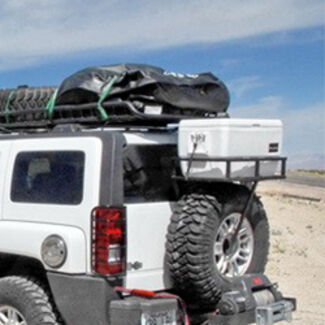


Jenny N.
12/26/2023



Jenny N.
12/27/2023

Joe
1/3/2024


Jenny N.
1/3/2024

Joe
1/3/2024


Jenny N.
1/4/2024
Helpful Links
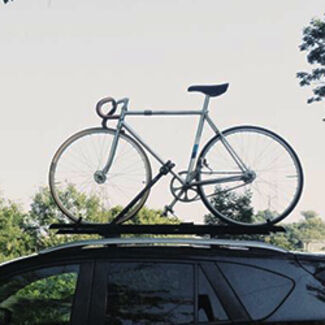
Scott E.
12/16/2023
I am putting a battery on my horse trailer to run lights with or without a tow vehicle. I also have a trailer breakaway system already installed that needs to be incorporated (would I keep the existing battery for the breakaway or can the deep cycle battery be used?). Is there a wiring diagram available for this setup? Assume a diode would go somewhere to prevent power from feeding back to tow vehicle.


Katrina D.
2/23/2024
Helpful Links
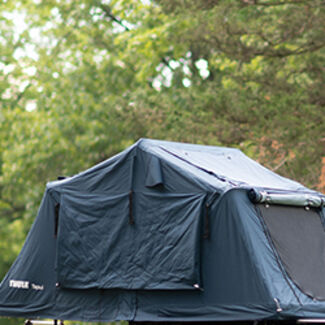
Billy V.
11/4/2023
I have a utility trailer with a 4 way and I use a 7 way adapter to plug in my car. I built an enclosed box on the trailer and I want to be able to run a 120 outlet inside for a small freezer and a couple of lights. How do I go about doing this?

Scott A.
10/8/2023
I just purchased a used travel trailer. 7 pin connector on trailer and my F150. When connected only the tail/running lights and trailer brakes work. No brake or turn signal lights on the trailer and it blows the mini cartridge fuse on my truck for those functions. I know it has been rewired with the trailer 7 pin being replace. I have checked for loose wires/shorts and haven't found any. The yellow wire from my truck is supposed to be for left turn signal/brake lights. The yellow wire from my 7 way trailer is not connected to anything. But the yellow wire on rv standards is back up lights. I didn't know there are 2 standards for 7way connections. Is it possible for my truck (SAE standard plug) wired to my trailer (RV standard) be the problem? Did someone wire it using the wrong standard? I'm confused, any suggestions?


Mike L.
10/10/2023
Helpful Links
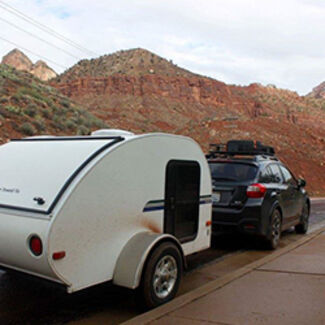
Ronald D.
7/27/2023
I have a set of LED tail lights that I want to put on my old old... OLD caravan. Had a quick attempt before I left on holiday, but everything I tried was a bit of a disaster. Lights flashed and there was actually sound as well. We have had problem for a while each time I connect caravan with the tailgate brakelight flashing. After we hold the brake pedal, this stopped and I always assumed it was holding current somewhere because of Redarc brake controller. But this problem is keeping me baffled. Have always done my own wiring, often running heavier wire than required. Done this for many years and want to change all the lights on the old girl once I get my head around what is happening. See there are units that add resistance to a light but how do you know which one to add. My friend has unit on his drawbar that has the standard wires enter an aftermarket box. We were going to see what is in box because it did same thing. The box is actually sealed shut with gland nuts on each end. I am sure I could do a similar unit if I knew what they have done. Any ideas would be appreciated.


Mike L.
8/3/2023

Hcar
12/10/2022
I am wire from go on a 2013 trailer, enclosed 16’. From reading your comment to another regarding relays, My assumption would be 1 relay each, left turn, right turn, running lights, reverse lights, and a general one for any switched LEDS; OR JUST THE FIRST FOUR:?


Mike L.
12/16/2022

Benny
11/18/2022
Hello on trailer side 7 pole plug flat i have white ,red green and two black wires one of the black is heavier gauge than the other one which wire goes where if u don't mind me asking the wire got hang up on the bumper hitch and pull the ires out of the socket wiring is 4 a gooseneck thanks

David B.
11/18/2022
Helpful Links
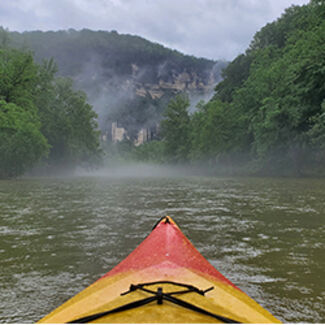
Erik
11/2/2022
We have a 2022 Dodge Durango, the running lights went out. Fuses look good, I haven’t tried the circuit tester yet. Our trailer is a 2021 Keystone passport. Replacing the 7 way plug, is this fairly easy to do? Is there something I’m missing on why the running lights went out? Blinkers, brake lights work. Any help would be great.

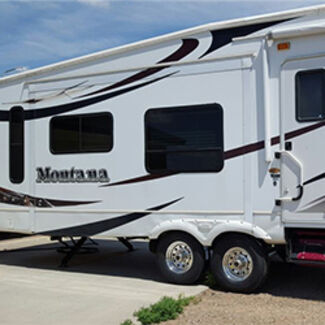
Qmel
6/23/2022
Great website! So I have the 2015 f150 Platinum and an old 92 fifth wheel, I started changing out the old trailer lighting for LEDs, I did the front two side marker lights and everything went fine, last week I changed out the rear top red marker lights and one side amber marker leaving only the two tail lights and one side marker to do the next day. I plugged them in and I got nothing, after testing everything, working backwards checking fuses and grounds, I got nothing. I began to surf the internet for answers and the only thing I could come up with was that it was a Ford thing and even they didn't know what to do. I'm a full time RVer so by the time I get a chance to work on the trailer after work it's pretty much starting to get dark. Last night I found this site and read the whole entire feed! Not only did I learn a lot! But towards the end of the feed someone had my situation and you explained it! I get that the LEDs confuse the computer and it thinks I have bulb's out and/or it thinks there's a problem with the trailer lighting module but if i finish changing out the last three remaining lights will I still have the same problem and have to put the old ones back on? I may have missed something on it last night if you already said, so I apologize in advance if you did. Thank you! ~QMel~

David B.
6/23/2022
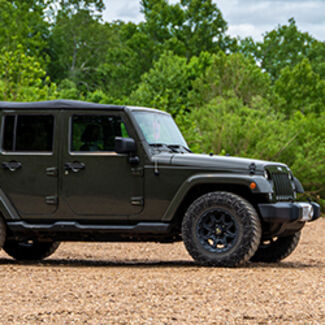
Chip
6/17/2022
I have a 2021 F250 and when backing our boat trailer the surge brakes are locking up. We never had this problem when pulling our boat with our F150 so I am trying to figure out what is causing this with the F250. Any suggestions?

David B.
6/18/2022

Garry W.
5/28/2022
My 7 way harness was stolen from my 2021 Keystone Springdale SG300BHFW. I have purchased a new harness but have no idea how to wire it back.

David B.
5/28/2022

Garry W.
5/28/2022

David B.
5/30/2022
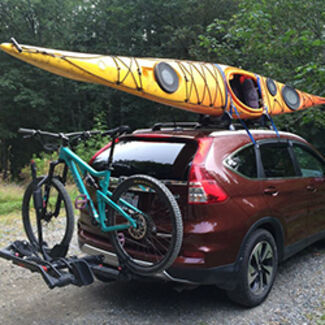
Tj
3/30/2022
Just rewired (7 pin) a preowned horse trailer we bought. Electric brakes work, running lights work, brake lights work. When you turn on a signal indicator both sides flash like hazards. Haven’t even gotten to accessory lights yet. What have we done wrong.

Les D.
3/31/2022

Tj
3/31/2022

Les D.
3/31/2022
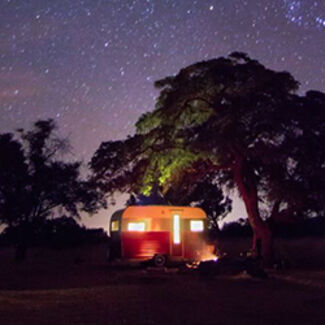
Preston J.
2/28/2022
I have a 2018 F-150 XLT that did not come with the factory tow package. I had to run a power wire with bus under the hood to the rear 7-pin harness in order to power my Curt Echo wireless brake controller. I want to install the Tekonsha P3 brake controller inside the truck now. Do I keep the 12v power to the rear 7-pin harness, and add another power wire with bus/fuse under the hood to power the Tekonsha controller? Or, do I need to remove the power wire to the 7-pin harness and use that for power to the new controller? Will it be safe to keep power to the rear harness? Thanks.

Les D.
3/1/2022

Preston J.
3/1/2022

Les D.
3/1/2022

Preston J.
3/1/2022

Les D.
3/2/2022

Preston J.
3/2/2022

Les D.
3/2/2022


Ed
2/24/2022
If this is not the right forum please redirect me. I just learned my 2018 F-150 SuperCrew with a tow package will not charge the trailer batteries while driving. The RV dealer checked the 7-pin Aux 12V and it showed no power. I spoke with a Ford service tech and he stated in order to have power the truck needed to be parked and you had to keep your foot on the brake pedal. He then hooked up a device that simulated a towed trailer and when the brake was not pressed there were zero amps at the 7-pin., but when the brake was pressed it showed 6-7 amp at the 7-pin. What are your thoughts about running a 12 or 16 gauge wire directly from the tow vehicle battery to the 7-pin Aux to charge the trailer batteries while driving? Would you recommend a DC to DC charger to up the amp output? Thanks.

Les D.
2/25/2022
Helpful Links

Ed
2/25/2022


Les D.
2/28/2022



Steve R.
12/3/2021
Greetings I have just finished wiring an old trailer to the diagrams(sae) and I have a curious issue I tested the truck to find the correct pin location and tested the trailer with a starter box and each works properly separate But together the trailer turn functions work correct only when the running lights are off but when the running lights are on the entire system will blink on and off or actually dim up and down The trailer lighting is grounded to the trailer at the lights single wire leads at the clearance lights, 2 at the tail lights and a lead passes to the truck from the frame other trailers work correctly on the truck as well what should I test next?

Les D.
12/3/2021
Helpful Links

Steve R.
12/3/2021

Les D.
12/3/2021

Steve R.
12/3/2021

Jay K.
11/19/2021
I have a 2021 Subaru Ascent with factory tow hitch and both 4 pin and 7 pin connectors. My question is, can I wire my Harmar Scooter Lift electrics to the 7 pin, assuming the black battery wire provides always on power to the lift?

Les D.
11/26/2021
Helpful Links
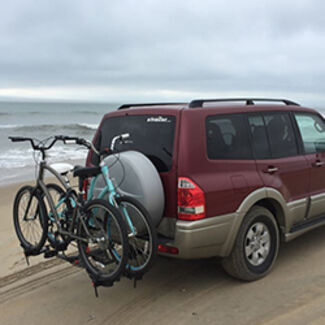
Mike
9/4/2021
Regarding the 12 V to the trailer. We just bought a 5th wheel. I saw in the manual that this 12 V will feed the trailer 12 V system. Is this supposed to be conected directly to the tow vehicle battery? Thanks

Victoria B.
9/14/2021

Mike
9/14/2021
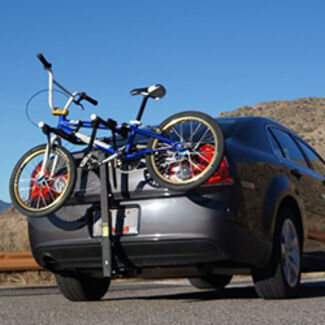
Larry S.
8/4/2021
I'm trying to help my cousin remotely. He has a 2002 Chevrolet Tahoe with a tow package, including a 7 pin connector. He also has an older model utility trailer. While visiting with him last week we replaced the lights & harness on the trailer with LED lights. The harness that came with the lights only has 4 wires. I believe we hooked up the lights to the wiring harness correctly. We used individual frame grounds for the side marker lights and the rear lights. The rear lights only had 2 wires. He has an older 7 wire to 4 wire adapter but it doesn't seem to work with there LED lights, unless we wired them up wrong? Do we need some other kind of adapter? Any help or comments would be greatly appreciated.

Victoria B.
8/5/2021

Larry S.
8/5/2021

Victoria B.
8/11/2021

Larry S.
8/11/2021

Doug B.
8/1/2021
21 Denali and 21 Months Branagh 3760. I damaged my plug on the trailer and while replacing it I discovered that RV wiring is a different layout. Do I have to have my truck hooked up to probably test ?

Victoria B.
8/5/2021
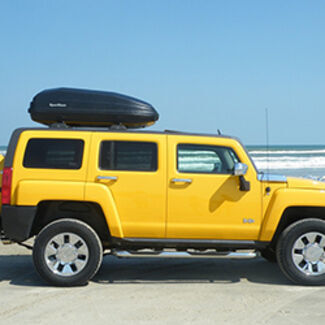
Kelly
7/18/2021
When we hooked lights up to the trailer the right blinker worked independently. When left blinker was activated both the right and left blinker came on. And the right headlamp on the trailer was on when everything was off. We inhooked the trailer and started at the plug on the truck and the red wire and green wire are hot all the time. We cut the yellow wire above the plug and that acted as it should not hot unless blinker is on. Above the plug we cut the green wire and it was hot when blinker was on and off . 1. Should both wires be hot ? 2. Why do both blinkers come on with left signal? Any help is appreciated Thanks Was working fine. Plug mount on truck got bent a little but wires look good. I guess first I need question 1 answered Thanks in advance


Jon G.
7/19/2021

Phil V.
5/12/2021
I have a 2020 Ford F150 Raptor. When I connect my RV to the 7 pin plug it does not charge the battery on the RV. RV service center says it's the truck, Ford says it's the RV. Any idea who's right and or how do I get it to work ? When I had a Ford F250 super duty everything worked the way it's supposed too.


Jon G.
5/12/2021

Phil V.
5/12/2021


Jon G.
5/12/2021

Phil V.
5/12/2021


Jon G.
5/13/2021

Phil V.
5/13/2021


Jon G.
5/13/2021

Matt P.
4/12/2021
Does the chassis of a utility trailer have to be connected to the vehicle ground for safety or any other requirements? The ground wires of all my trailer's lights are wired directly to the junction box connected to the 7-way plug, so a path through the frame is not electrically necessary.


Jon G.
4/14/2021

Thomas L.
3/16/2021
The black battery wire should be same size as the white ground wire - 10 gauge in chart - faq311-7-way-trailer-diagram-rv_2_800 The picture below this chart shows correct wiring for RV plugs. As a professional RV transporter I have seen to many trucks wired with those 2 wires to small and cause a fire from overheating. I built my own wire harness and none of the RV wiring was connected to the factory wire harness except the battery and brakes. My harness uses relays and 30 A circuit breakers. No problems since 1998 with my RV harness.


Jon G.
3/18/2021

Thomas L.
3/16/2021
7-Way Trailer Wiring Color Code RV Standard You have an error on this chart. The RED is left turn not a 12 v battery wire Anyone who wires their RV 7 blade plug according your chart will suffer so problems with no left turn or left stop light. the rest of the connections are RV standard connection with Yellow being optional.


Jon G.
3/18/2021

Cal
4/23/2021


Jon G.
4/27/2021

Cal
4/27/2021

Rick M.
1/25/2021
I'm wireing a semi trailer and have three tail lights per side,the lights are marked ground/tail/stop,turn. White is ground brown is tail green is right turn,I have a red wire for brake but if hooked up to turn/stop wire it works but not together so what is wrong. Another words turn the blinker on fine but hit the brake it canceled the turn


Jon G.
1/25/2021

John B.
11/10/2020
I have a travel trailer and the rear lights have only one bulb. I would like to replace with a two bulb light so that I can have back-up lighting. Is this possible or is my travel trailer not wired for backup lights? I have a 7-way connector from my pickup truck to the camper.


Jon G.
11/11/2020

John B.
11/11/2020


Jon G.
11/11/2020
Helpful Links

Charlie C.
10/22/2020
Thanks for the quick response. I was also directed to have another vehicle with a 7 way connector try to provide power to the camera. I used a 2007 GMC truck with towing package that also didn’t work.


Jon G.
10/22/2020

Charlie C.
10/23/2020


Charlie C.
10/30/2020


Charlie C.
10/22/2020
I have a Ford F 250 with towing package. I recently purchased a 2020 Dutchmen Kodiak Camper that has a built in wiring harness for a rear view camera (Furrion). Simple installation but can't get power to camera, called Furrion Tech Support and was told camera only gets power when headlights are on in manual. Tried, didn't work. Then informed that some car manufactures have current limitations on newer vehicles and that I can buy an adapter cord to solve the problem. Doesn't sound right?

Keith
8/30/2020
I have an enclosed trailer with great 12 volt DC interior LED lighting. It sits next to the garage and I do a lot of work in it. What’s the best way to Connect 120 volt AC power to run the 12 volt lighting? Currently I just hook up the truck when I need to use it but this is getting old. Is there a way to run a converter to the 7 way plug on my trailer?


Jon G.
9/4/2020


Ross T.
8/18/2020
I have a 2002 Chevy Silverado 3500 at my company. Its got a trailer attached to it, but doesn't work. I've been trying to fix it and I notice that its wired wrong(7 wire harness). Also, there's an auxiliary battery near the trailer neck which is connected to the junction box ( meaning two wires from the truck harness itself aren't connected to the junction box). All the wires from the trailer are connected to the junction box. Is this auxiliary battery necessary?


Jon G.
8/28/2020

Dord
7/3/2020
Hi there, For people that already have a 4-way connector (e.g. by using Curt 55370) how would they go converting that to use 7-way connector and in particular something like Hopkins HM11141144? BTW HM11141144 is the best connector I saw with OEM like quality. I got that the +12V and ground for HM11141144 will come from the battery. Also the backup trailer lights will come from the car backup lights. I see how all the other trailer lights will come from 55370. What is not clear is what should be done with the trailer ground wire on the 4-way connector out of 55370. It cannot be used for trailer ground because it cannot carry enough Amps (55370 it's protected by a relatively small fuse). For trailer ground I already got the 10 awg wire from battery. Should I just ground that wire? Thanks


Chris R.
7/7/2020

Kevin
7/1/2020
I have a 2013 Chevy Pickup 4-wheel drive. I hooked my trailer brake controller. It was working fine. Then I tapped into the power wire going to the controller, to power an emergency light. Just recently I reworked the wire connection and shorted out the power wire. Now I do not have power to the controller and no power at the two terminals at the front of the fuse box under the hood. The fuses look good at the front of the fuse box. Would anyone have an idea what the issue is.


Chris R.
7/7/2020

Kevin
7/8/2020


Doru
5/28/2020
I saw both 20A and 30A specified for the +12V Red wire with the mention that 20A will only be good for 2 and 4 brake magnets. My car towing weight capacity is max 3000lb and 200lb tongue weight - small, so the campers I'm looking at are small. So 2-4 magnets will be enough braking for me. Is there a way to find out how many magnets a trailer has? Is there a rule of thumb like one wheel one magnet?


Chris R.
6/1/2020

Doru
5/28/2020
I would like a clarification on the wiring. I have a car that has a hitch harness in the trunk (power directly from battery, turn RH, turn LH, brake light, tail lights, ground directly to car body). I do not want to install any brake controller in the car. I plan to use a wireless one like Curt C51180. So in this case do I need to hook anything up on the Blue wire (electrical brake controller power output)?

Anonymous
1/24/2020
Very nice article. I would suggest adding a note that for the section at the end Soldering: This is the best way to connect wires. Simpy solder your wires together for the strongest, most reliable connection using a soldering gun. Use heat shrink tubing to protect the soldered connection. that its always important to have the right length enough to give a good overlap of the insulation after soldering and size just a little larger than the insulation, for a tight fit of heat shrink tubing already on the wire prior to soldering them together!!! Its easy to solder first and then go Hmmm... now how do I get this tube over my wire?

Roy B.
1/24/2020
I would like to know how to best replace 2012 jayco 266RKS PULL behind 2 axel brake wires at wheel hub that tire blowouts made into spaghetti.


Jacob H.
1/24/2020
Show All (37) Replies
Hide Replies

on Wiring
Videos
for Wiring
Help Articles
for Wiring
Expert Answers
for Wiring
When wiring a trailer connector, it is best to wire by function, as wire colors can vary. We have an excellent wiring diagram on our website, I will provide you a link so you can look at it. If you are looking at the inside of the trailer connector…
view full answer...I have added a photo detailing the wiring connections for the Pollack Heavy-Duty, 7-Pole, Round Pin conncetor, #PK11700, see link. This is a SAE J560 compliant connector. The wiring diagram for the vehicle side connector, #PK11720, is pictured…
view full answer...A 4-Way trailer connector has the basic lighting functions only; running lights, left turn signal and brake lights, right turn signal and brake lights, and ground. A 7-Way has these functions and a 12 volt circuit, a circuit for electric trailer…
view full answer...It could be a tow package fuse on the vehicle. Use the owners manual to find the locations of fuses/relays related to the tow package wiring to check them and replace as needed. If the issue is not a fuse or relay then you can test the vehicle side…
view full answer...On a 7 pin round which is the common connection on a semi trailer, the clearance/marker lights are at the 10 o clock position when you look at the trailer wiring connection. When looking at the connector on the back of the truck, that will put the…
view full answer...You have it right so far, the 4-way connector is just as you have stated. Remember that Yellow has a L in it so that is the left side brake/turn signal and green has a R in it so that is the right side brake/turn signal. The colors for wiring a…
view full answer...It's a wire color difference but not a function difference on the pins of the 7-way. The difference comes from the fact that the two different styles are representative of two different areas that uses trailers. Traditional is usually seen…
view full answer...Figuring out what color wire goes to what function is sometimes quite confusing. I have attached a diagram which covers both the most common wire colors designated for a seven pin trailer connector and a seven pin vehicle connector, referencing the…
view full answer...From the top of the B and W Tow and Stow part #BWTS10043B down to the bottom of the unused ball when it is in it's lowest position measures 14 inches. The 7 inch drop version part #BWTS10040B instead has this distance at 12 inches.
view full answer...If your trailer has 7 wires running all the way back to the brakes, then yes, you can tap into the existing wiring. Each of your new brakes will have two wires for the brake magnet. One wire is for 12 volt power to the brake magnets and the other…
view full answer...You can certainly add a 7-way trailer connector to your trailer with 6 wires. You would simply have 1 pin on the 7-way connector that did not function. I recommend adding a 7-way molded trailer wire connector like part #H20046, and a junction box…
view full answer...When wiring a 7-Way on your trailer with 5 wires, your green wire will be right turn/brake, the yellow wire will be left turn/brake, the brown wire will be the taillights, and the white wire will be the ground. You will want to find out if the blue…
view full answer...Departments
Towing
- Trailer Hitch
- Fifth Wheel
- Gooseneck
- Towing a Vehicle
- Front Hitch
- RV Hitch
- ATV Hitch
- HD Truck Hitch
- Vehicle Wiring
- Brake Controller
- Ball Mounts
- Weight Distribution
Sports and Recreation
Trailer Parts
- Utility Trailer
- Boat Trailer
- Landscape Trailer
- Enclosed Trailer
- 5th/Camper Trailer
- Car Hauler
- Horse Trailer
Vehicle
Contact & Help

What our customers are saying:
"WOW! I am impressed! I called to place my order and real person answered, spoke perfect English, albeit a slight southern accent, and my order was sent within a day, shipped quickly and I had it a few days later. I saved over a hundred dollars over local and installed it my self. I cant imagine how that they could do any better. THANKS!"
Popular Vehicles
- Subaru Forester
- Ford F-350 Super Duty
- Ford F-250 Super Duty
- Chevrolet Silverado 1500
- Jeep Wrangler Unlimited
- Jeep Wrangler
- Ram 3500
- Toyota Highlander
- Ram 2500
- Chevrolet Silverado 2500
- Subaru Outback Wagon
- Chevrolet Silverado
- Dodge Ram Pickup
- GMC Sierra 2500
- Ram 1500
- Ford F-250 and F-350 Super Duty
- Jeep Grand Cherokee
- Toyota Tacoma
- GMC Sierra 3500
- Toyota Tundra
- Ford Escape
- More >>
- Jeep Cherokee
- GMC Sierra
- Toyota RAV4
- Nissan Rogue
- Dodge Grand Caravan
- Toyota Sienna
- GMC Sierra 1500
- Honda Odyssey
- Chevrolet Equinox
- Chevrolet Silverado 3500
- Ford Explorer
- Chrysler Town and Country
- Ford F-150
- Jeep Liberty
- Nissan Murano
- Ford Edge
- Subaru XV Crosstrek
- Hyundai Santa Fe
- Chevrolet Silverado New Body
- Ford F-250 and F-350 Heavy Duty
- Kia Sorento
- Chevrolet Traverse
- Dodge Journey
- Acura MDX
- Honda CR-V
- Chevrolet Silverado Classic
- Jeep Patriot
- Ford Focus
- Acura RDX
- Honda Fit
- Ford Fusion
- Ford Flex
- Honda Pilot
- GMC Acadia
- Toyota Prius
- Dodge Durango
- Nissan Frontier
- Nissan Pathfinder
- GMC Terrain
- Honda Accord
- Volkswagen Jetta
- Kia Soul
- Dodge Dakota
- Chevrolet Cruze
- Chevrolet Sonic
- Mazda 3
- Toyota FJ Cruiser
- << Less






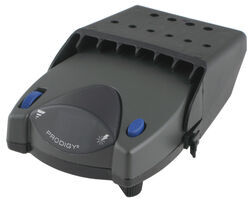
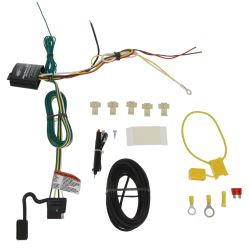
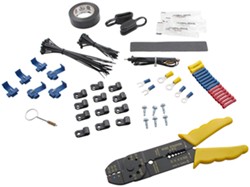
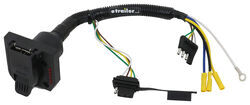
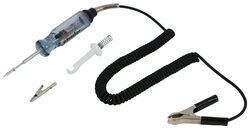

















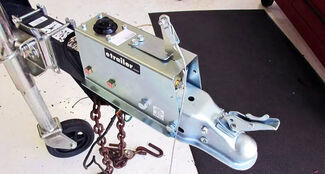






Shane
4/15/2024
Hi, I just purchased a Tekonsha Prodigy P3 Trailer Brake Controller with OEM Harness for my 2001 GMC Yukon that has the factory trailering package and 7-way connector. I've used it with other trailers with only 4-pin connectors (via an adapter), and all necessary functions work. I've installed the Brake controller in my vehicle and connected it to the fuse block. It powers up OK. I have yet to test it with my trailer brakes. But as I was also looking to install the Furrion Vision S Wireless RV backup Camera System I also bought from etrailer, I was testing out the connections on the 7-way and can't get any reading on the 12-volt power (hot) connector on the 7-way on the Yukon. I've tried it with it running, with Acc On, with lights on, and nothing seems to energize it. I can't find a fuse in the front left (under-hood) box for it, or in the inside panel on left side of dash. I want to use this circuit to both charge the trailer battery when towing (which I thought it would by default) as well as, possibly power an additional backup camera I want to install for the truck itself (not the Furrion, which is prewired on the trailer, and which I assume at this point, will work as expected). Am I missing something? Where should I look for a fuse? And is this circuit HOT all the time, or only when the ignition is ON or the engine is actually running? Any advice would be appreciated. Thanks!